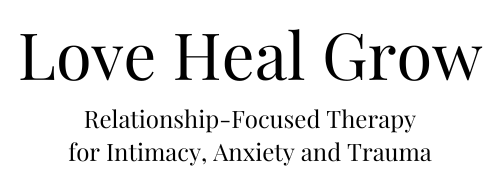
Dissociation is being disconnected from your surroundings, others around you, and even yourself in a moment. In the simplest terms, it is being disconnected from the moment. Now, all of us have times that we are disconnected from our current moment when we are daydreaming, but dissociation due to a traumatic event can be extremely challenging to cope with in your daily life — especially if it is overwhelming you.
So, what makes this dissociation different from a few minutes spent daydreaming? Essentially, dissociation is one of our brain’s ways of protecting us from something that we have experienced. It is a way of stopping the memories that may hurt us from coming up and lowering our fears, anxieties, and even guilt. This makes dissociation a strategy that our minds use to cope (when the dissociation is trauma-related at least). However, unlike active avoidance coping mechanisms, dissociation is often triggered unconsciously and we can be doing it without even being aware of it.
Like other forms of avoidance coping methods, though, dissociation can hinder our ability to face and make it through whatever trauma we are reacting to, and in the long run, this can hinder our ability to heal. So, how can we recognize if we are experiencing dissociation and learn to cope with and even overcome it? This is exactly what we are going to talk about in this article.
What Are the Signs of Dissociation?
Now that we have delved into what dissociation is, how can we recognize it? Like many things that our brains and bodies do, there are no one-way-fits-all symptoms or signs that can tell you without a doubt that you may be experiencing dissociation. There are, however, some summon signs that you can keep an eye out for if you think you or a loved one may be experiencing these feelings.
These signs are:
- Frequent spacing out or daydreaming
- Staring off into space or having a glazed look
- Your mind going blank or wandering a lot
- Feeling numb or emotionally detached
- A sense of living in a dream — where the world around you doesn’t feel quite real
- Feeling like you are detached from or watching your body from the outside
- Lacking a sense of who you are or your identity
- Feeling disconnected from your loved ones and your environment
- Feeling very little physical pain — the mind is a powerful tool and detaching from ourselves can lessen feelings of physical pain as well as emotional pain
As we mentioned above, there is no “right” way to experience dissociation and everyone’s experience may be different. What is important is that you determine what it feels like to you. This way you can keep an eye out for it and know when you may want to try a grounding technique (which we will get into later) to come back to the present moment.
Where Does Trauma Come In?
Alright, so we know what dissociation is and what some signs of it are, but what does it have to do with trauma? Well, we noted briefly above that dissociation is often a response — either conscious or unconscious — to a traumatic event. Traumatic events can make us powerless or helpless and leave us in fear or in pain even when they are over. Dissociation is simply a way that our brains can distance ourselves from the experience and help us get through it.
It is important to note, however, that people who dissociate during a traumatic event can be more likely to then utilize this survival technique as a coping mechanism later on. Now, because dissociation is a natural part of our fight-or-flight response to stressful events (such as trauma), it is not necessarily a bad thing. What becomes difficult is when we end up falling back on dissociation in any situation and allowing it to impact our daily lives.
Tips to Help You Cope with Dissociation
There is no right way to cope with anything. Everyone may find solace in different things and because of this, it can be difficult to provide a strict set of guidelines that are suitable for everyone. That being said, there are a few different techniques that you can use to help you cope with instances where you feel you are dissociating.
All of these techniques are meant to help you focus on the present and where you are in the moment.
Mindfulness
The first technique is called mindfulness and it is essentially the practice of being present in the moment.
There are numerous different mindfulness practices that can all be helpful in bringing you back into the present, one of the most simple and effective of these practices is focusing all of your attention on a single thing. This can be your breath coming in and going out, the feeling of your fingers gently massaging your neck or temples, or any other sensation that allows you to completely focus on it.
The goal of practicing this technique is to teach your body to be present in the moment. This helps your body to recognize that the trauma that you are dissociating from is not happening in the current moment and therefore your mind does not need to go into survival mode and protect you.
Breathing
Breathing techniques can be extremely helpful in de-escalating a moment of severe dissociation, especially those that result in higher levels of anxiety or stress. A simple exercise like inhaling for 6 seconds, holding the breath for 4 seconds, and then exhaling for 6 seconds can be an incredibly easy way to relieve feelings of stress and teach your body to relax the fight-or-flight response that it is having at that moment.
Grounding
We have left this last technique for last because it can be one of the most effective ways to help relieve feelings of detachment. This technique is called grounding practices and they can be as simple or complex as you want them to be. The point of a grounding exercise is to connect with your surroundings.
You could try placing your hands under running water and noticing any sensations you feel, touching a familiar object and describing it (out loud or silently), or even simply placing your feet firmly on the ground and feeling the earth beneath your toes. There are many different ways to ground yourself and you may find that physical sensations may not be enough for you. In this case try to use a more mental-based exercise to ground yourself, such as counting backward from 100 by 5s, practicing your times tables, or naming as many countries as you can.
While these three tips are all different techniques, there is a great deal of overlap between them and you can see the connecting thread between them all is bringing your attention to the moment rather than letting it stray into the past. And like anything else, these tips may be enough to help you cope with your feelings of dissociation or they may not.
When to Reach Out
Let’s be real here, you don’t have to schedule a therapy session every time you find yourself daydreaming. In fact, a lot of people maintain that daydreaming is actually good for our minds. It is when dissociation makes our daily life and our daily tasks difficult to manage — that it begins to interfere with our everyday lives. While dissociation in itself is not a bad thing necessarily, when it is used too much, it can greatly hinder the healing process.
So, if you feel like you are always watching yourself from the outside or feeling numb to both emotional and physical pain, it may be time to consider speaking to a professional therapist. We at Love Heal Grow strive to be there for our patients in any way they need and we hope that if you are wanting guidance on how to cope with instances of dissociation and heal from your trauma you do not hesitate to reach out to us.
























